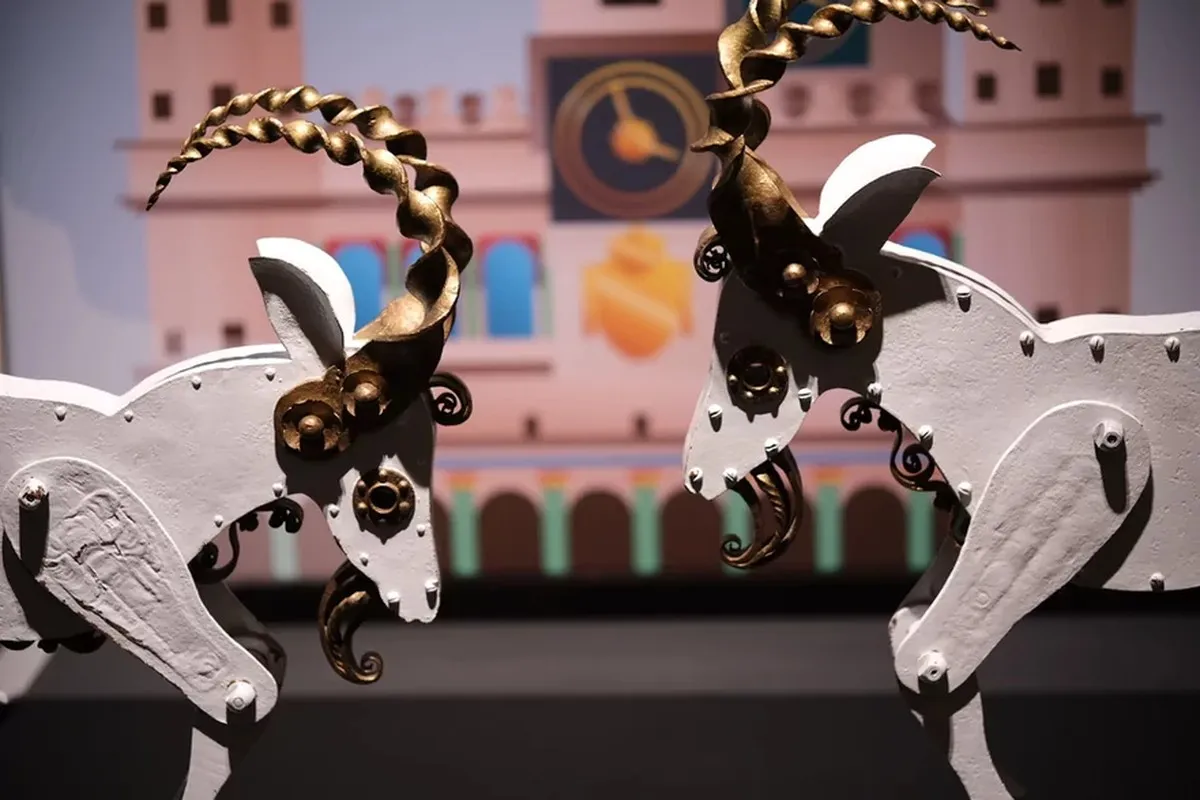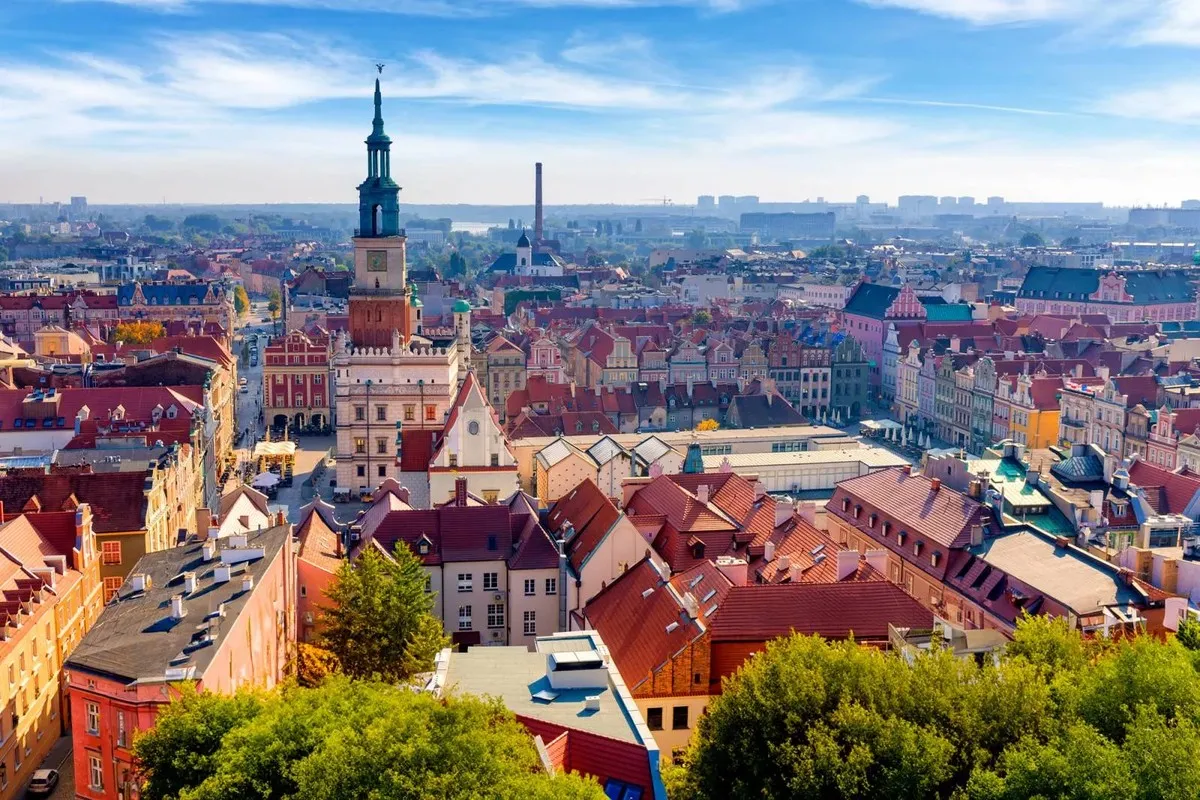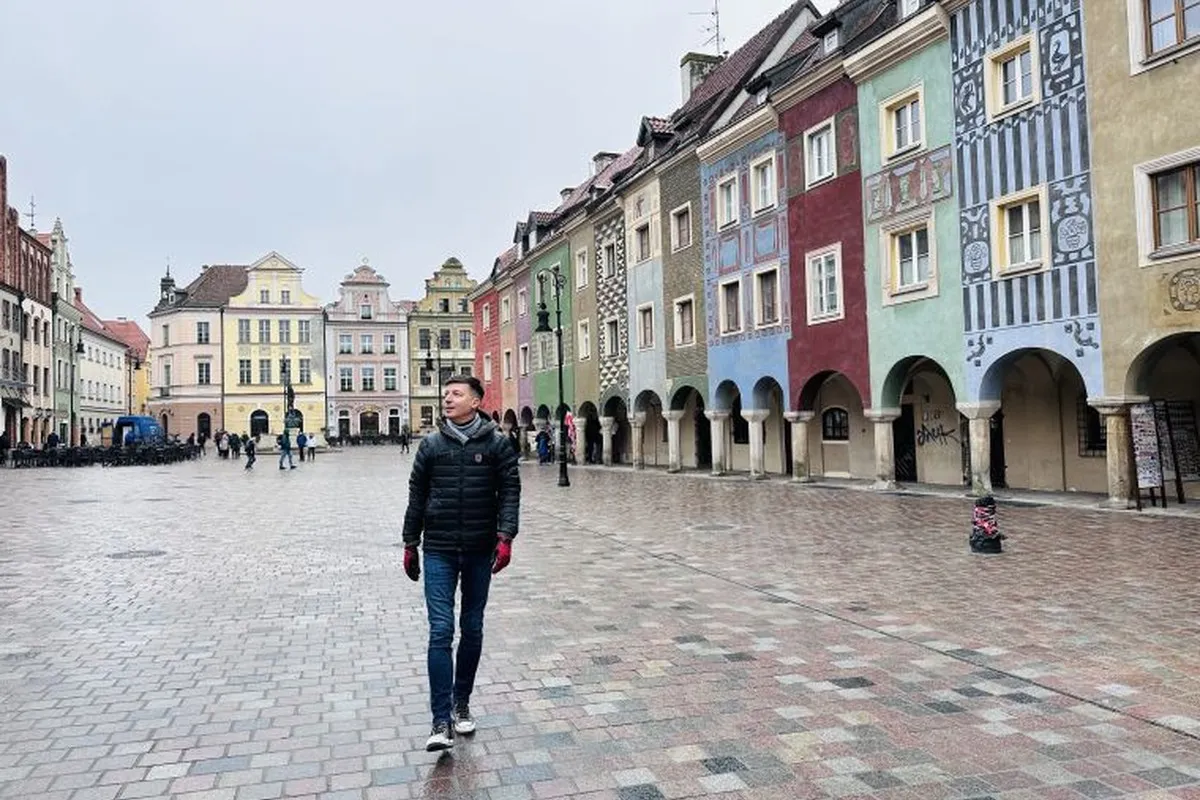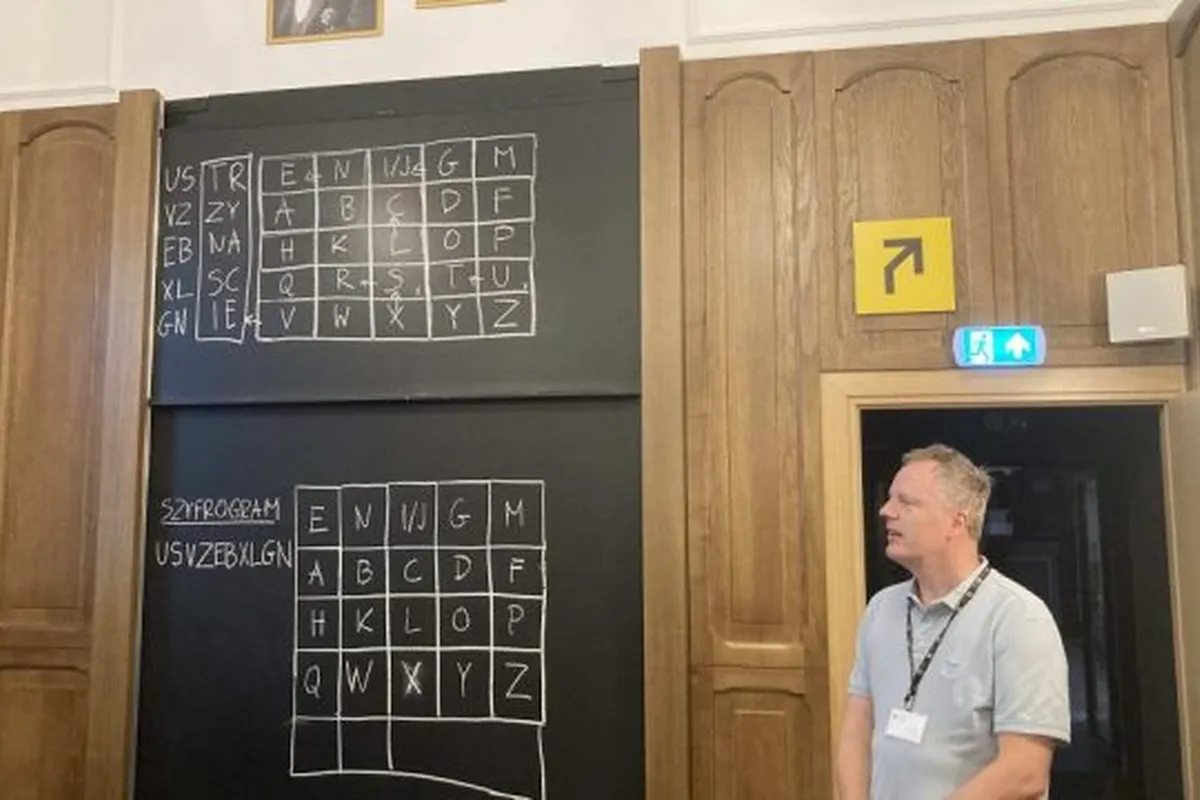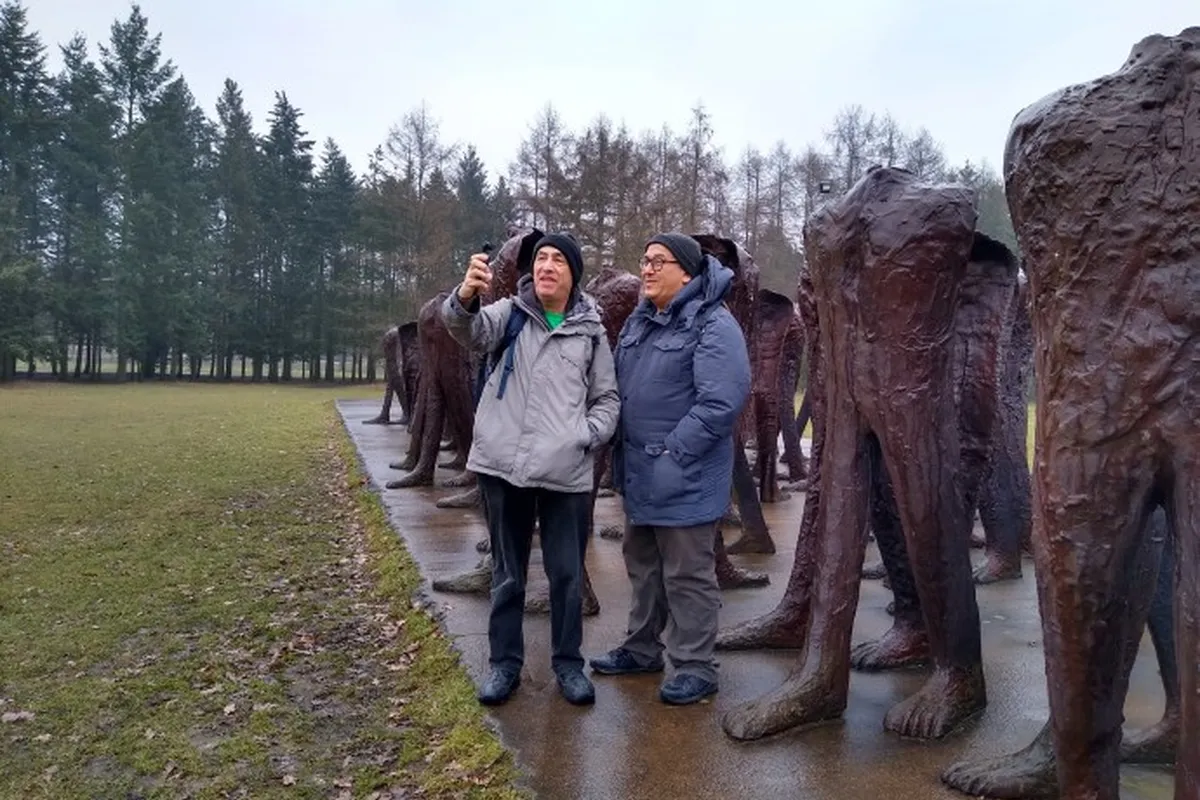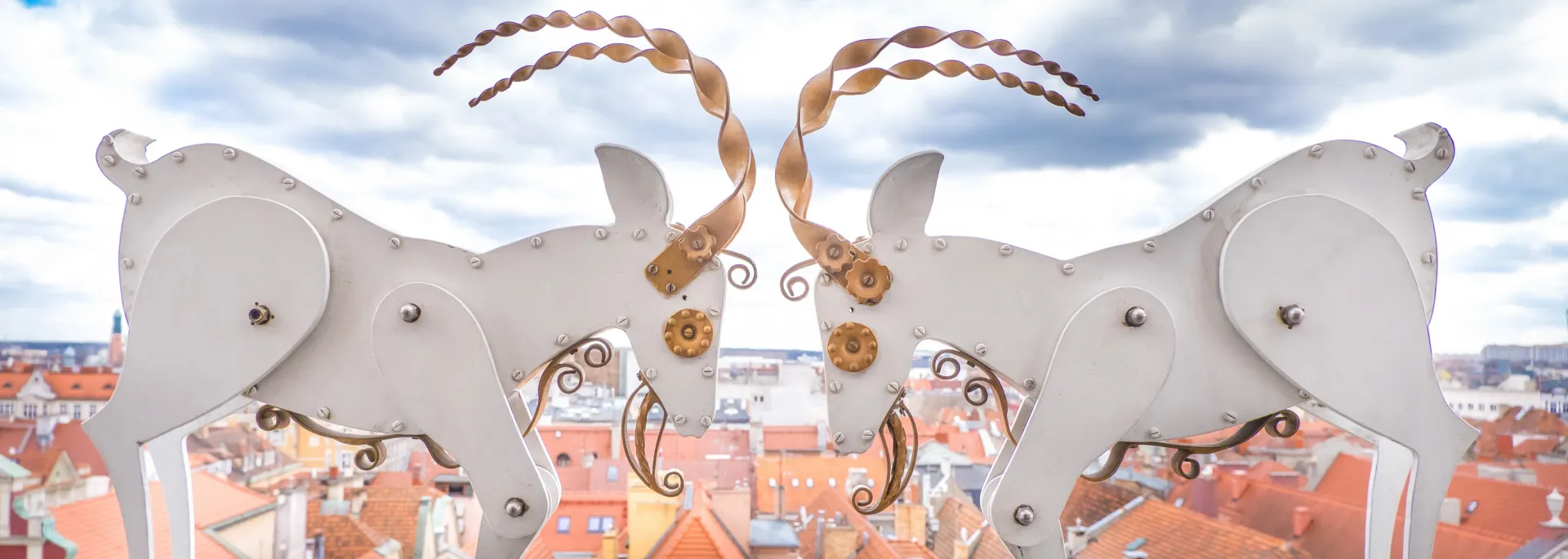

Odkryj nas na Facebooku
Rogalin to oczywiście sędziwe dęby🌳 okazały pałac🏛 i efektowna galeria malarstwa🎨 Miłośnicy spacerów doceniają rozległy park oraz malownicze Łęgi Rogalińskie. Wrażenie robi kolekcja powozowni. Nie wszyscy goście Muzeum Pałac w Rogalinie wiedzą jednak, że warto odwiedzić jeszcze jedno miejsce: kościół św. Marcelina. Czym był dawniej? Gdzie ma swojego... bliźniaka? Co skrywa w podziemiach? Przeczytajcie👉 https://powiat.poznan.pl/ukryta-perelka-rogalina
Fot. AdamCiereszko | Powiat Poznański | Gmina Mosina | Parafia Rogalin
Czy wiecie, że dziś, znaczy się 14 kwietnia obchodzimy Święto Chrztu Polski? Być może właśnie tego konkretnie dnia w 966 dnia książę Mieszko I dał się ochrzcić. Podobno sporo w tej sprawie zadziałała księżniczka czeska Dobrawa. Czy użyła argumentu czytelniczego ("Nie czytasz, nie idę z tobą... itd.")? ;) Nie wiemy. Za to wiemy, że możecie w Miasto Poznań zobaczyć sporo miejsc i pamiątek związanych z tamtymi wydarzeniami. To między innymi 👉 Ostrów Tumski, a tam ślady palatium (można usiąść na kamieniu tronowym!) i najstarsza w Polsce katedra, Rezerwat Archeologiczny Genius Loci, gdzie można zobaczyć relikty wałów grodu z X wieku, instalacja "Przekrój (P)poznania", pokazująca jak wielkie te wały były, Brama Poznania, która Wam objaśni o co tam chodziło, a także Ratusz - Muzeum Poznania, w którym wśród wielu eksponatów można zobaczyć niepozorne, ale cenne fragmenty grobów Mieszka I i jego syna Bolesława Chrobrego - pierwszego króla Polski 👑 Sounds like pomysł a wycieczkę, jak pisał kronikarz Thietmar 🚶♂️🚶♀️
Jak odróżnić prezent od nie-prezentu? 🤔 Prezent zwykle ma odpowiednią oprawę i opakowanie 🎁 A wasze poznańskie podarki możecie wręczać w tytkach* z autorską grafiką, która przygotowała specjalnie dla nas SiXi Artystka. Dostępne są w rozmiarze małym (0,90 zł) i dużym (1 zł) w Informacji Turystycznej PLOT przy Starym Rynku 59/60.
_______________
* tytka to poznańsku papierowa torebka, tej 🛍️ :)
Czy nowa grafika od Festiwalu ANIMATOR zrobiła Wam dzień? Nam tak :) Sprawdźcie co się szykuje. Link w komentarzu ⬇️
Zdjęcie w tle profilu „Poznan.travel”
W ramach trwającego do 24 kwietnia Festiwalu Restaurant Week Polska zdecydowaliśmy się na wizytę w poznańskim Magazyn Food Concept. Zgodnie z formułą, każdy z uczestników kolacji otrzymał trzydaniowe menu oraz napój, za które zapłacił 69,99 zł. Restauracje mimo wspólnej, festiwalowej formuły mają pole do zaprezentowania swojego stylu i charakteru. Magazyn serwuje dania w taki sposób, aby uczestnicy mogli się nimi dzielić. Dziś to dość powszechny pomysł, ale w Poznaniu to właśnie Magazyn przed laty po raz pierwszy sięgnął po ten pomysł i realizuje go do dziś. Dziękujemy Łukaszowi (właściciel) za poświęcony czas i ciekawą opowieść o serwowanych w magazynie winach. Kupione na wynos butelki chłodzą się w domowych lodówkach, ale kolejne obiecujemy sobie wypić w magazynowym zielonym ogródku 🍾🥂🍷
W poznańskiej edycji festiwalu bierze udział aż 30 różnych restauracji! Każda z nich publikuje dwa menu do wyboru, przy czym jeden wariant to menu bezmięsne. Rezerwacji i płatności dokonuje się przez stronę organizatora (link w komentarzu). Jest szybko, prosto i smacznie. Zachęcamy do odwiedzin. Festiwal trwa do 24 kwietnia 2024 roku. Smacznego!
Restauracja The Time to serce niezwykłego kompleksu zlokalizowanego na ul. Młyńskiej 12 w Poznaniu. M12, bo pod takim skrótem działają dwie restauracje, cocktail bar i wine bar, to miejsce w którym jakościowa gastronomia spotyka się ze sztuką, biznesem i rozrywką. W minioną sobotę wyróżniona przez przewodnik Michelin restauracja The Time zaproponowała gościom menu, które szef kuchni Dawid Łagowski przygotował wspólnie z Arkadiuszem Wilamowskim. Było pysznie! Zapraszamy do naszej relacji i polecamy obserwować kalendarz wydarzeń M12, bo to świetna, wysmakowana rozrywka. Wierzcie nam, jest w czym wybierać!
Jeśli chcecie się przekonać, dlaczego wzniesienie w poznańskim Radojewie nazywane jest Kokoryczowym Wzgórzem, to teraz jest ten czas🌸🌱
Fot. Nadleśnictwo Łopuchówko, Lasy Państwowe, Karolina Kapałka
Magnolie ruszyły🌸 Wcześniej niż zwykle. Pora odwiedzić Miasto i Gmina Kórnik.
Czy wiecie, że ▶️kiełbasa biała parzona wielkopolska◀️ to produkt regionalny, chroniony na tych samych zasadach, co rogal świętomarciński❓ Dostępna w sklepach przez cały rok, najlepiej smakuje wiosną, a na wielkanocnym stole nie może jej zabraknąć. Doskonała jakościowo biała z Wielkopolski to świetna wizytówka regionu i prawdziwy smakołyk. Czy będzie kiedyś dostępna również w poznańskich restauracjach? Zobaczcie co mają na ten temat do powiedzenia nasi restauratorzy i szefowie kuchni 👉 Restauracja Delicja, Restauracja A NÓŻ WIDELEC, Concordia Taste.
Kto powiedział, że nad jezioro to tylko w gorące, letnie dni👧👦🌊🌳
Szef kuchni Restauracja Cucina Bogumił Przybylak wprawił gości restauracji w prawdziwie świąteczny nastrój. Polskie smaki zaprezentowane przez zaproszonych do współpracy szefów kuchni oczarowały zgromadzonych na wczorajszej kolacji. Dopełnieniem idealnego wieczoru stały się wina, za dobór których odpowiadał Kamil Tuszewski. Wyszło idealnie! Oby więcej takich spotkań i takich dań 🍷🥂🍾
👨🍳Bogumił Przybylak - Restauracja Cucina
👨🍳Mariusz Górecki - Cappuccina Cukiernia Lodziarnia
👨🍳Mikołaj Szmyt - Restauracja Projekt Alfa
👨🍳Ernest Jagodziński - Chef's Table by Ernest Jagodzinski)
👨🍳Maciej Majewski - Kuk Restaurant by Maciej Majewski)
🍷 Kamil Tuszewski - Restauracja Cucina
Już w czerwcu Park Dzieje ponownie stanie się areną niezwykłego spektaklu. Plenerowe widowisko "Orzeł i Krzyż" to spektakularna opowieść o dziejach Polski z udziałem kilkuset aktorów-wolontariuszy. Ty też możesz zostać jednym z nich! Dołącz do zespołu, by tworzyć historię: https://www.parkdzieje.pl/dolacz-do-nas
Konkursowe rowerowe wyzwanie na wiosnę🚴🌷 Fot. AdamCiereszko
Poznańska restauracja SPOT. po raz drugi zestawiła dobrą kuchnię, polskie wina i jazz. Podczas kolacji WINO I JAZZ vol. 2 goście mieli okazję degustować wina z Winnica Margaret zestawione z wegetariańskim menu szefa kuchni Jakuba Hamankiewicza. W tytule kolacji pojawił się również jazz, którego najlepszej próby dawkę dostarczył zespół Siema Ziemia. SPOT. zapowiada powrót do muzycznych kolacji jesienią, ale dobra kuchnia i polskie wina dostępne są w stałej ofercie 🤩😎💥 Zachęcamy do odwiedzin i przypominamy, że SPOT znalazła się w gronie restauracji rekomendowanych przez przewodnik Michelin.
- - - - - - - - - - - - - -
🟥 Poznań to jedno z trzech polskich miast (obok Krakowa i Warszawy) ujętych w przewodniku Michelin. W Poznaniu rekomendowanych jest 11 restauracji.
1 GWIAZDKA MICHELIN
⭐ Muga - ul. Krysiewicza 5, 61-825 Poznań
BIB GOURMAND
✔️ Fromażeria - ul. Ratajczaka 27, Poznań
✔️ TU. - ul. Grunwaldzka 34A, 60-768 Poznań
REKOMENDACJE:
✔️ 62 bar & restaurant - ul. Świętego Michała 62, 61-005 Poznań
✔️ A nóż widelec - ul. Czechosłowacka 133, 61-425 Poznań
✔️ Delicja - Pl. Wolności 5, Poznań
✔️ Nooks - ul. Poplińskich 1, 61-573 Poznań
✔️ Papavero - ul. 3 Maja 46, 61-728 Poznań
✔️ SPOT - ul. Dolna Wilda 87, 61-501 Poznań
✔️ The Time - ul. Młyńska 12, Poznań
✔️ Zen On - ul. Ratajczaka 25, 61-814 Poznań
